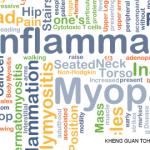All diagnostic modalities have limitations, Dr. Schneider pointed out. “Lab and CSF tests aren’t sensitive or specific—the same is true of MRIs—and angiography is frequently positive and lacks sensitivity for small vessel disease.” The solution: Brain and leptomeningeal biopsies should be used in cases of children with suspected PACNS who have negative angiography. Additionally, identifying patients at high risk of progression may help determine whether they’ll require immunosuppressive therapy.
At the Hospital for Sick Children, four patients with biopsy-proven small vessel vasculitis were treated as follows. All four were given prednisone, two were given cyclophosphamide, and one was given azathioprine. Three of the four recovered with no neurological deficit, and there was a relapse in one patient recently, six years after treatment.
Dr. Schneider’s research shows that the patients with angiographic PACNS most likely to get progressive disease had three indications: neurocognitive dysfunction; multifocal, bilateral MR lesions; and distal stenoses on angiogram. This led him to think that the classification for vasculitis should be re-examined and should include the following categories: progressive, non-progressive, and small vessel (biopsy), each with a separate treatment. (See Table 1)
Jane Jerrard is a journalist based in Chicago.

